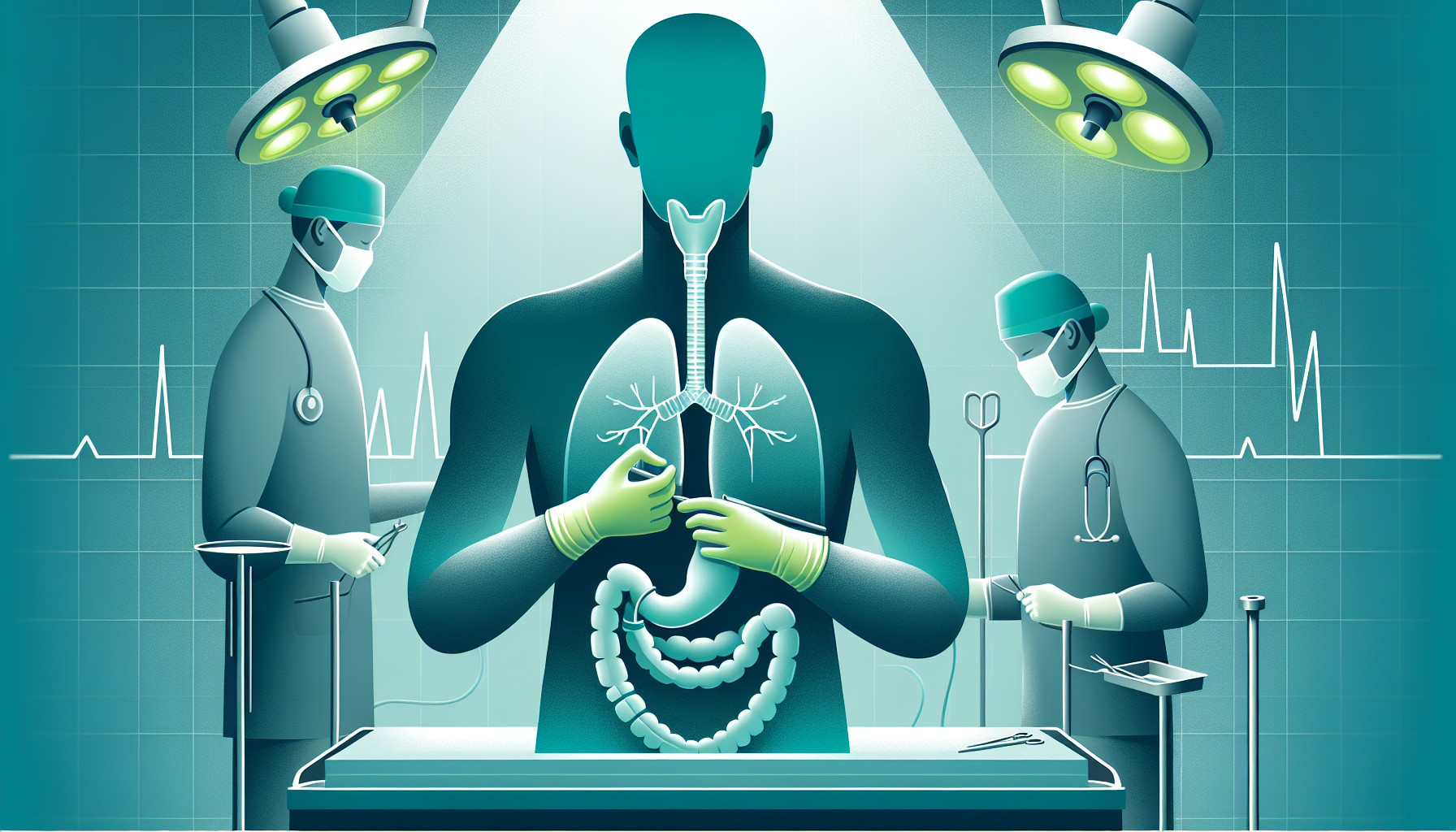Our Summary
This research paper talks about a surgical procedure to remove part of the esophagus, called esophagectomy. During this procedure, there’s a risk of damaging a certain part of the body called the thoracic duct (TD). Damage to the TD can lead to a serious complication called chylothorax, where a type of body fluid called lymph leaks into the space between the lung and chest wall.
To prevent this, the researchers tried a new technique. They injected a special dye into the lymph nodes in the groin area. This dye helped them to see the TD clearly while they were doing the surgery. They used two different types of minimally invasive surgical systems to perform the esophagectomy.
The method was tested on 21 patients, 13 men and 8 women. They found that they could see the TD clearly in all cases after about 35 minutes. The thoracic phase of the surgery took an average of 150 minutes. They successfully managed to avoid damaging the TD in all but one case, where they were able to fix the damage by clipping the TD. There were no cases of chylothorax or any adverse reactions to the dye injection after the surgery.
The researchers concluded that injecting this dye before the esophagectomy helps to prevent damage to the TD. This could help to avoid the serious complication of chylothorax.
FAQs
- What is the purpose of the dye injection prior to the esophagectomy?
- What is the risk associated with damaging the thoracic duct during an esophagectomy?
- Were there any adverse reactions to the dye injection in the study?
Doctor’s Tip
A helpful tip that a doctor might tell a patient about esophagectomy is to discuss the use of dye injection before the surgery to help prevent damage to the thoracic duct. This technique can improve the success of the surgery and reduce the risk of complications such as chylothorax. It’s important to have a thorough discussion with your healthcare provider about the specific details and techniques that will be used during your esophagectomy to ensure the best possible outcome.
Suitable For
Esophagectomy is typically recommended for patients with conditions such as esophageal cancer, Barrett’s esophagus, severe gastroesophageal reflux disease (GERD), esophageal strictures, or other conditions that affect the esophagus. Patients who have not responded to other treatments or have a high risk of complications may be recommended for esophagectomy.
Timeline
Before the esophagectomy:
- The patient undergoes various tests and evaluations to determine the need for surgery.
- Pre-operative counseling and education are provided to the patient to understand the procedure and its potential risks.
- The patient may need to follow a specific diet or medication regimen before the surgery.
- The actual surgery involves removing part of the esophagus and reconstructing it using a portion of the stomach or intestine.
- Recovery in the hospital typically lasts 1-2 weeks, followed by a period of rehabilitation and recovery at home.
- The patient will need to follow a specific diet and lifestyle changes to adjust to the new anatomy of the digestive system.
After the esophagectomy:
- The patient will be closely monitored for any complications or signs of infection.
- Physical therapy and rehabilitation may be necessary to regain strength and mobility.
- The patient will need to follow up with their healthcare team for regular check-ups and monitoring of any long-term effects of the surgery.
- Dietary restrictions may be necessary, such as avoiding certain foods or eating smaller, more frequent meals.
- The patient may experience changes in their ability to swallow or digest food, which may require ongoing management and support.
- Overall, the patient may experience improvements in their quality of life and relief from symptoms related to their condition.
What to Ask Your Doctor
- What is an esophagectomy and why is it necessary in my case?
- What are the risks and potential complications of an esophagectomy, including the risk of damaging the thoracic duct and developing chylothorax?
- How will you ensure that you can clearly see and avoid damaging the thoracic duct during the surgery?
- What is the success rate of this new technique in preventing damage to the thoracic duct?
- What is the recovery process like after an esophagectomy, and how long can I expect to be in the hospital?
- Are there any alternative treatments or procedures that could be considered instead of an esophagectomy?
- What are the long-term effects or potential complications of having an esophagectomy?
- How soon after the surgery can I expect to resume normal activities or return to work?
- Are there any dietary or lifestyle changes I should make to support my recovery after an esophagectomy?
- Do I need to follow up with any specific specialists or undergo any additional tests or procedures after the surgery?
Reference
Authors: Varshney VK, Nayar R, Soni SC, Selvakumar B, Garg PK, Varshney P, Khera PS. Journal: J Gastrointest Surg. 2022 Aug;26(8):1559-1565. doi: 10.1007/s11605-022-05341-w. Epub 2022 May 2. PMID: 35501550
